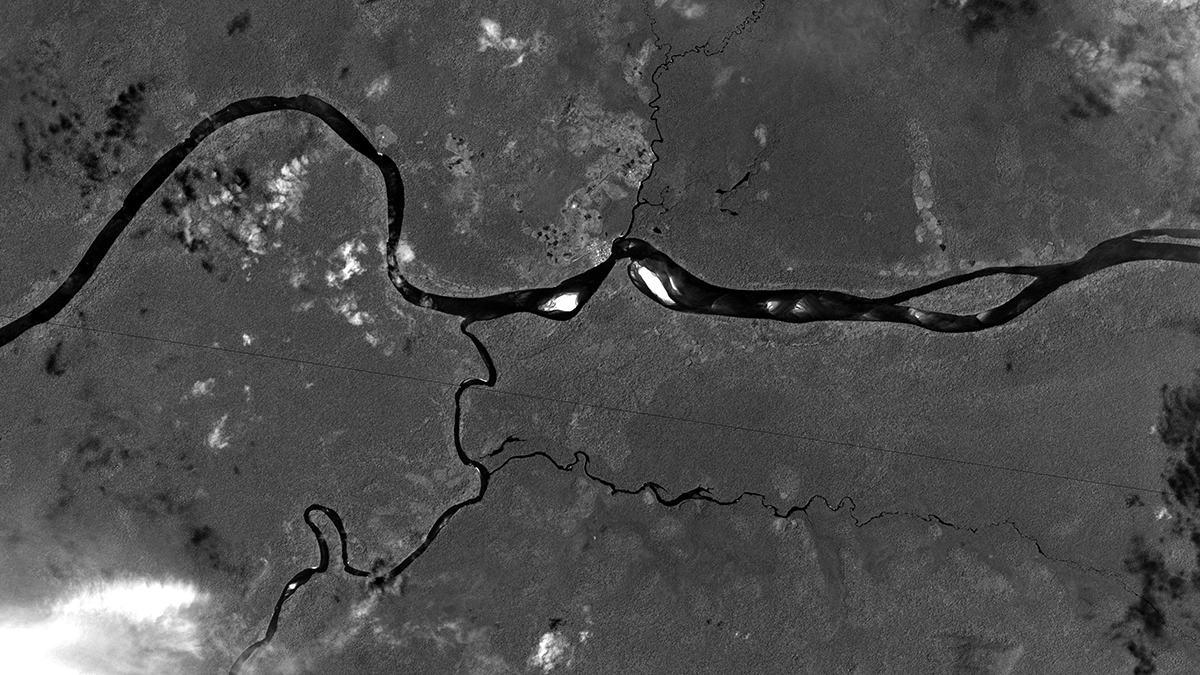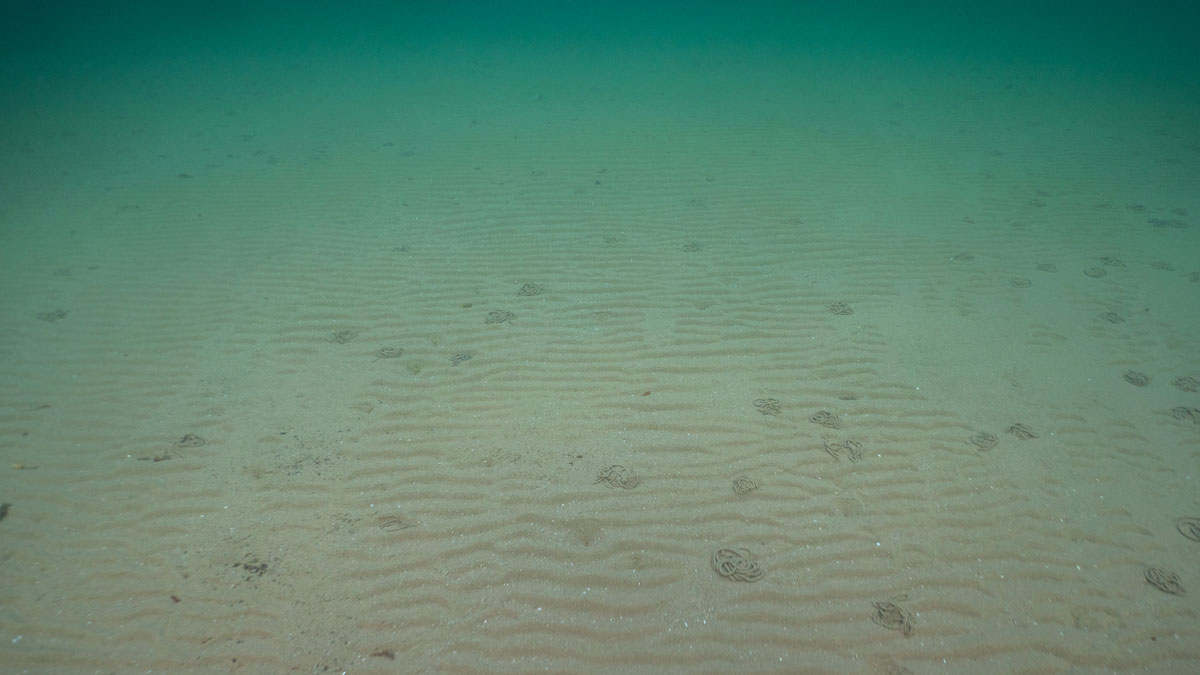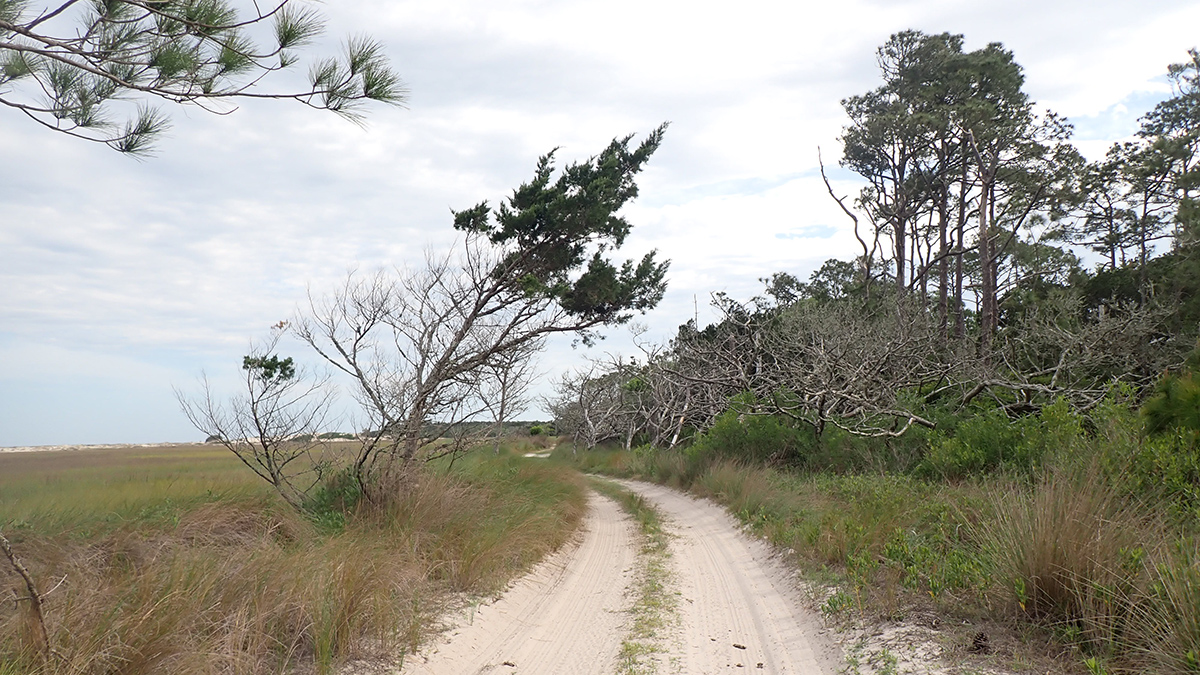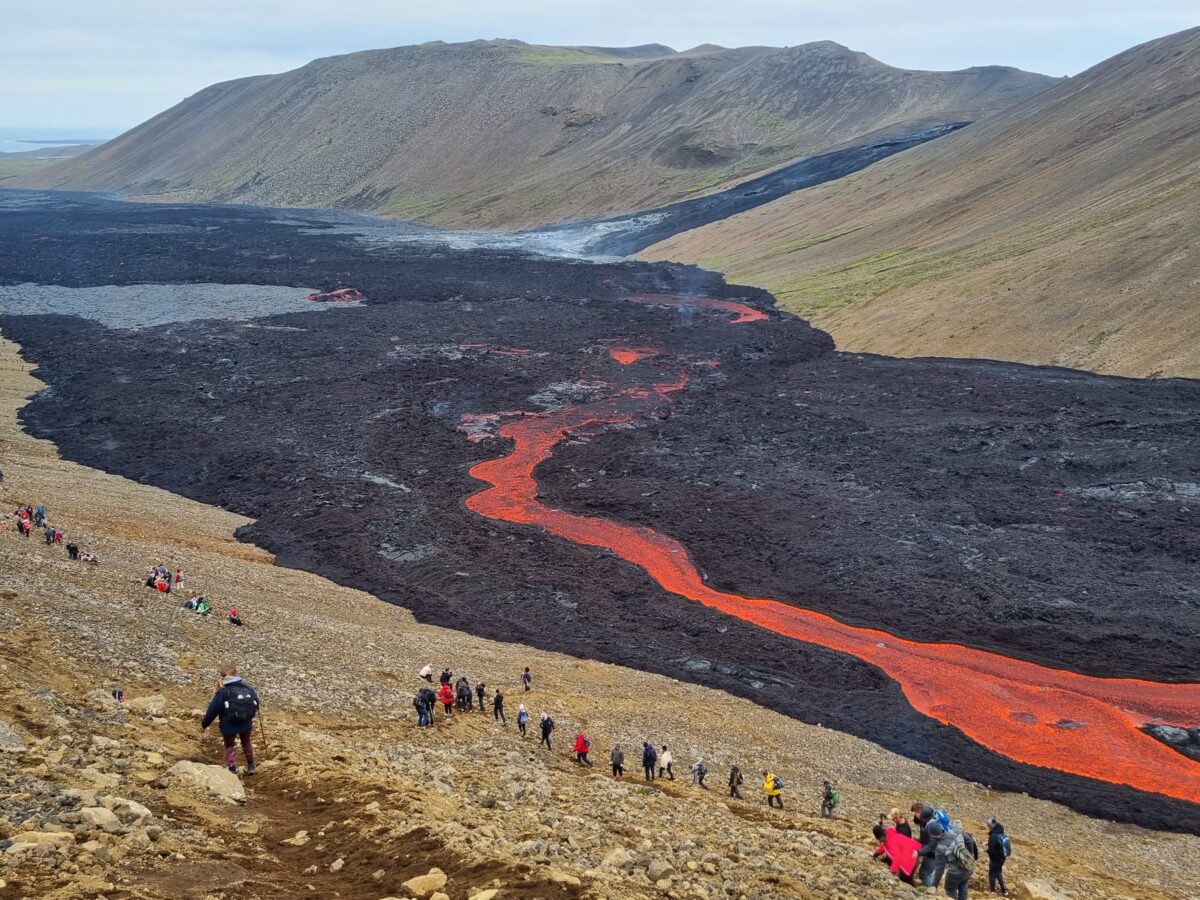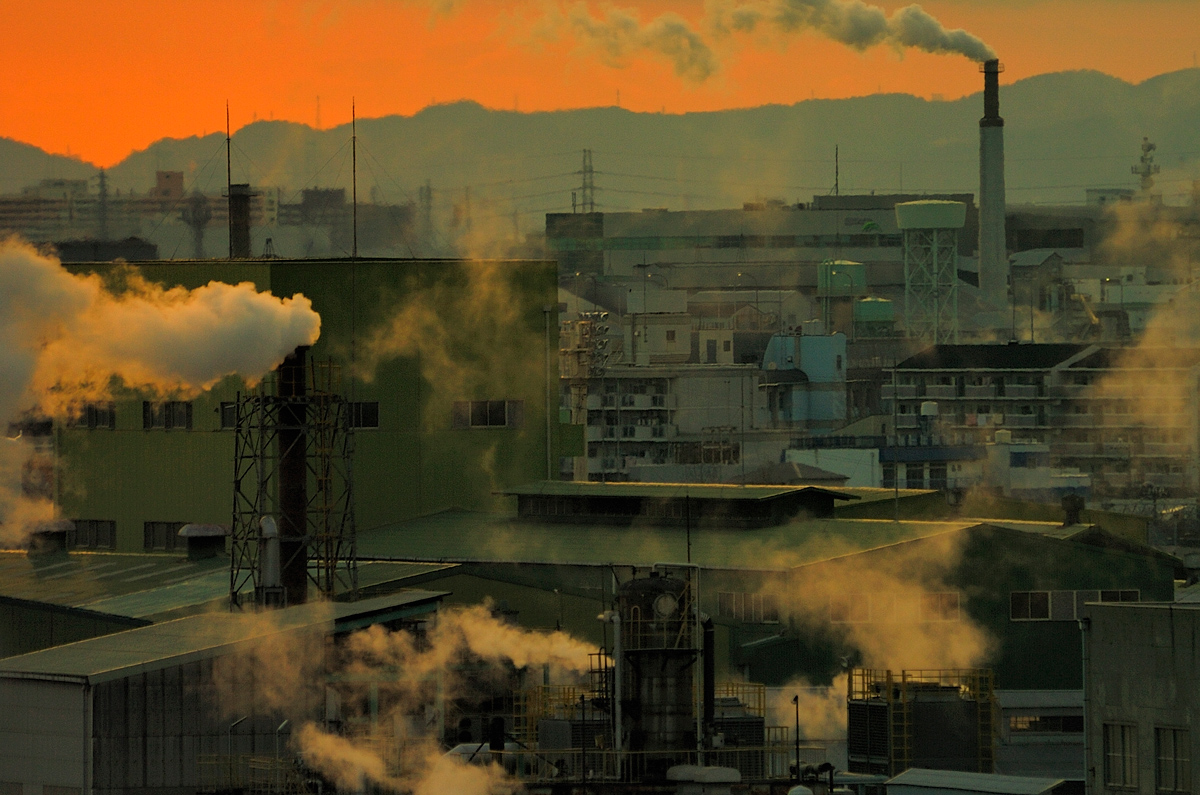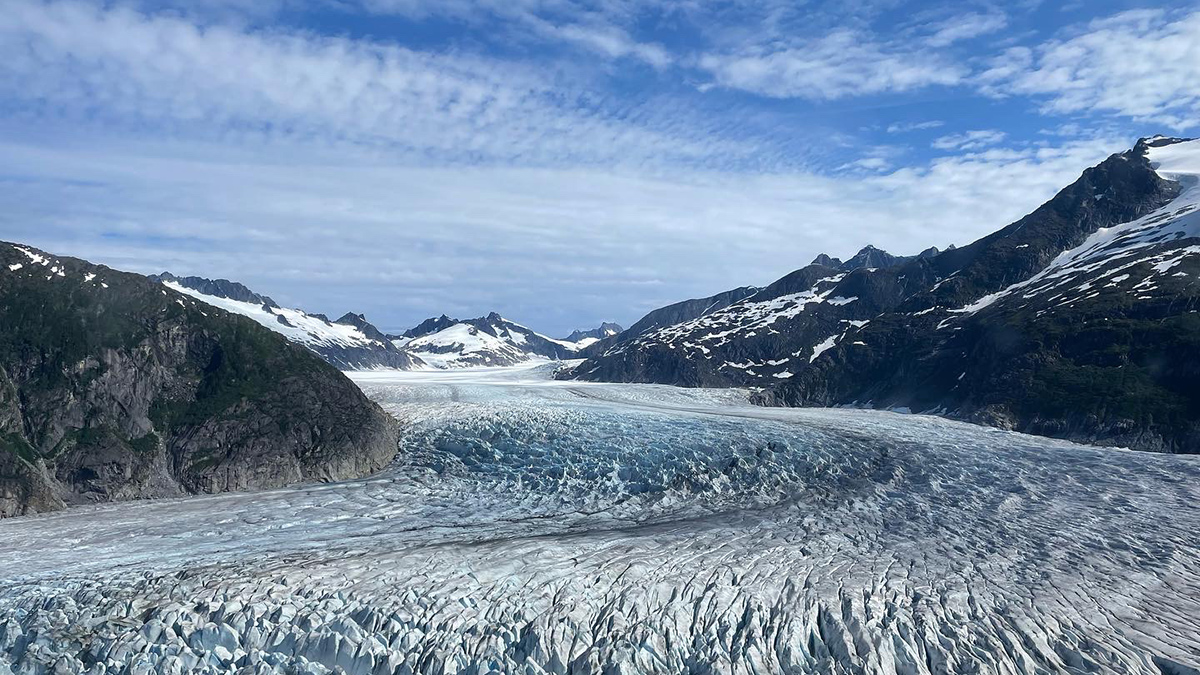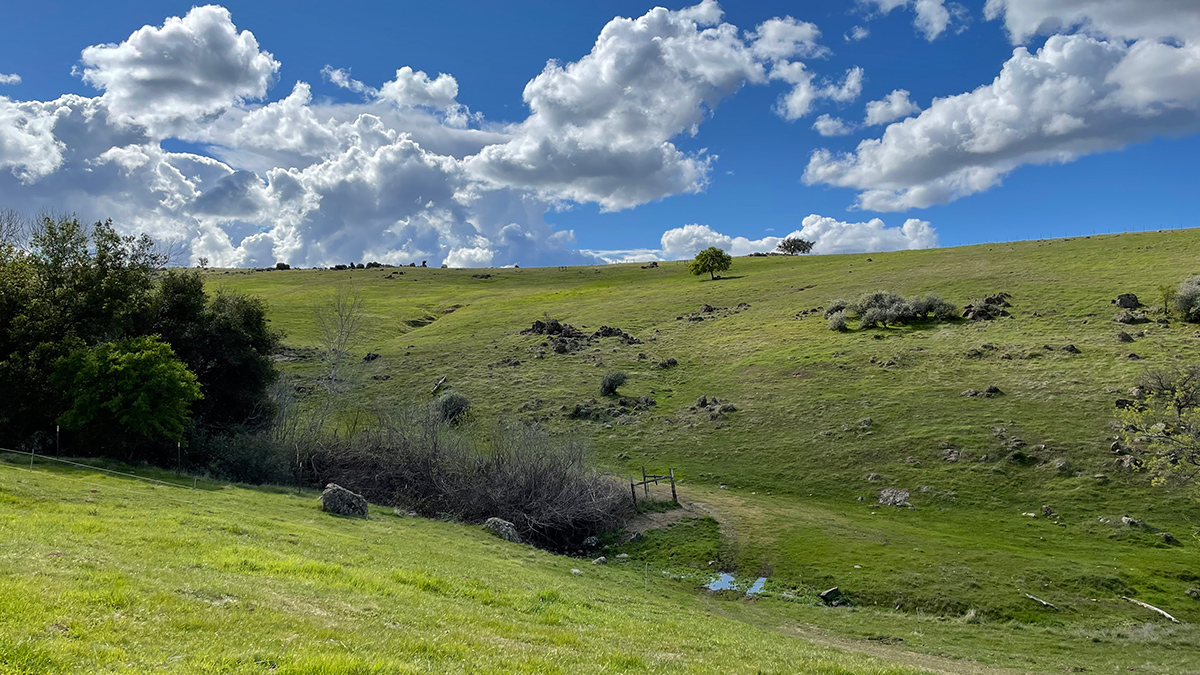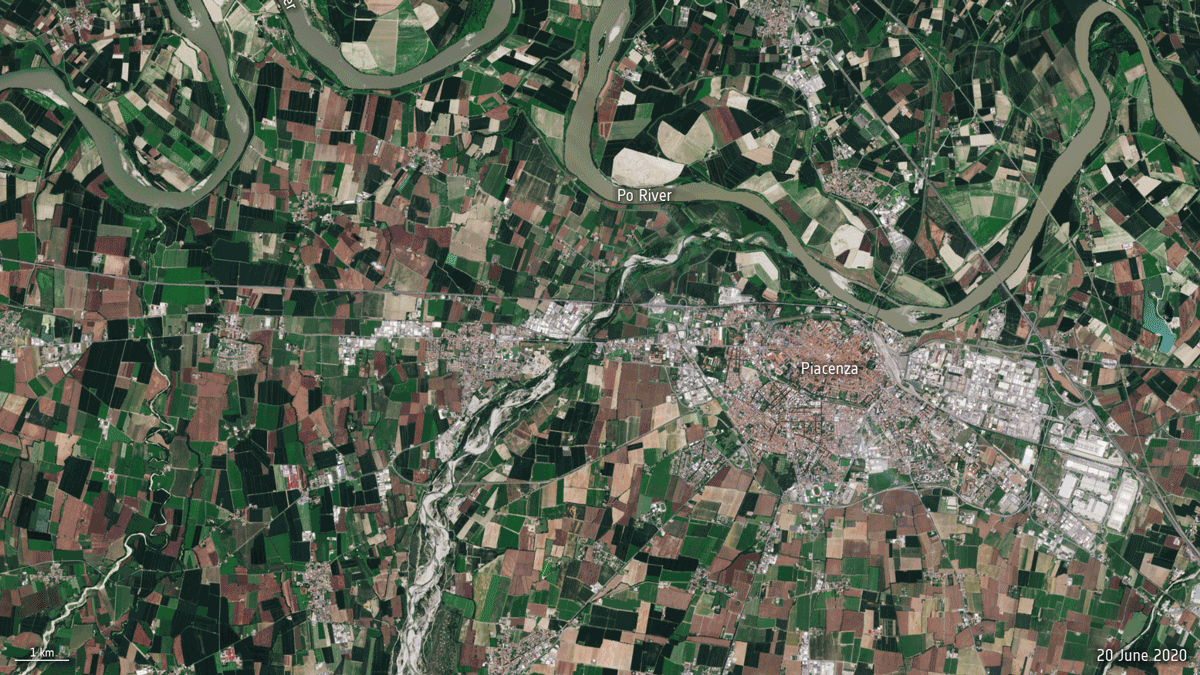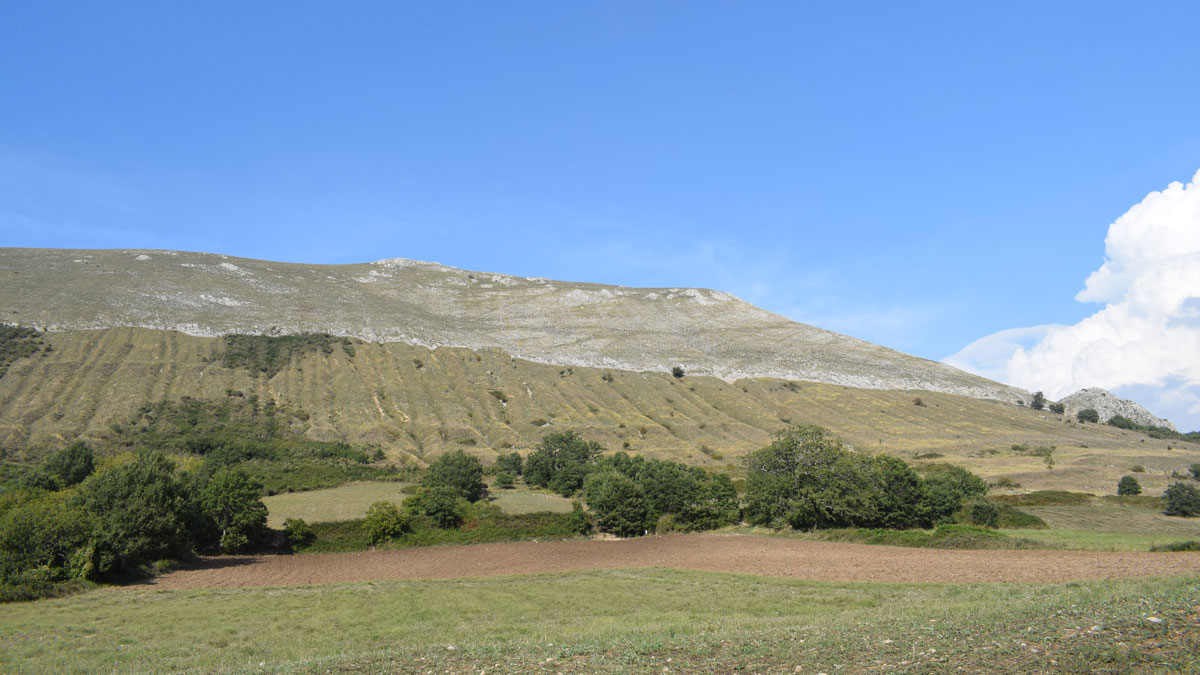乍一看,这些水道似乎毫无意义。一篇新的评论文章详细阐述了它们为何如此存在。
Research Spotlights
Research spotlights are plain-language summaries of recent articles published in AGU’s suite of 24 journals.
Mapping the Ocean Floor with Ancient Tides
A new study uses a paleotidal model to trace the formation of carbon-rich mud deposits over thousands of years.
Flood Prediction Could Boost Road Resilience off Georgia’s Coast
Researchers and community members worked together to develop recommendations for how Little Cumberland Island can mitigate flooding hazards.
Teaming Up to Tailor Climate Education for Indigenous Communities
A new college-level curriculum, cocreated by Indigenous and Western researchers, could help Indigenous communities adapt to climate change on the Colorado Plateau.
Matching Magma Dikes May Have Different Flow Patterns
A set of lab experiments involving a laser, gelatin, and xanthan gum explored how varying flow patterns between dikes with similar speeds and shapes could affect eruption predictions.
Glaciers Offer Clues into the Path of Fossil Fuel Pollution
New research traces the origin of carbon deposited from the atmosphere onto glaciers.
Compost and Biochar Could Boost Carbon Sequestration by Crushed Rock
Crushed rock additives may also help decrease soil emissions of other greenhouse gases, such as nitrous oxide and methane.
Modeling the Past, Present, and Future of Drought
A new study combines historical observations, climate modeling, and data from tree rings to create a fuller picture of historic as well as potential drought conditions.
Isotopes Unearth History of Earthquakes in the Apennines
Dating of cosmogenic chlorine isotopes yields long-term estimates of fault activity in Italy, showing that periods of earthquakes and quiescence alternate over millennia.

